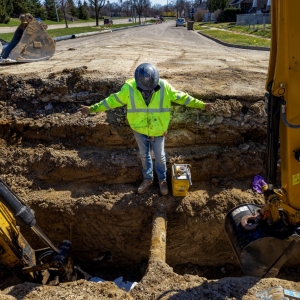 https://www.circleofblue.org/wp-content/uploads/2022/04/2022-04-14-Michigan-Waters-True-Cost-JGanter-1502-Edit-2500.jpg
912
1600
Brett Walton
https://www.circleofblue.org/wp-content/uploads/2018/06/Circle-of-Blue-Water-Speaks-600x139.png
Brett Walton2022-05-02 07:18:482022-12-09 10:52:35After Decades of Neglect, Bill Coming Due for Michigan’s Water Infrastructure
https://www.circleofblue.org/wp-content/uploads/2022/04/2022-04-14-Michigan-Waters-True-Cost-JGanter-1502-Edit-2500.jpg
912
1600
Brett Walton
https://www.circleofblue.org/wp-content/uploads/2018/06/Circle-of-Blue-Water-Speaks-600x139.png
Brett Walton2022-05-02 07:18:482022-12-09 10:52:35After Decades of Neglect, Bill Coming Due for Michigan’s Water InfrastructureWater Woes Loom for Michigan Suburbs, Towns After Decades of Disinvestment
Michigan cities rich and poor, big and small have been delaying maintenance on their water systems for decades. Now, even wealthy towns are suffering the consequences of past reluctance to pay for water system upkeep.

Throughout the Great Lakes region and across the U.S., water systems are aging. In some communities, this means water bills that residents can’t afford or water that’s unsafe to drink. It means that vulnerable systems are even more at risk in a changing climate. From shrinking cities and small towns to the comparatively thriving suburbs, the true cost of water has been deferred for decades.
As the nation prepares to pour hundreds of billions of federal dollars into rescuing water systems, the Great Lakes News Collaborative investigates the true cost of water in Michigan.

Bill Hunter stands beneath a crumbling standpipe that was due for replacement 20 years ago. Hesitant to spend the money, the city instead aimed to slow the standpipe’s decay by fitting it with a metal roof. Now, the standpipe threatens to fail before crews can complete a replacement project over the next three years. Photo by Kelly House / Bridge Michigan
This is part three of a ten-part series.
Kelly House, Bridge Michigan – May 3, 2022
SOUTH HAVEN—In this Lake Michigan vacation town, boulder-sized chunks of concrete have collapsed from a century-old city standpipe that helps supply water to bistro taps, condominiums and garden hoses.
And judging by the latest fissure, another few tons could fall at any moment.
In Detroit’s suburbs, a 1920s-era drinking water treatment plant in Mount Clemens is in such rough shape, equipment breakdowns are happening faster than staff can keep up.
“We’re making parts, because they don’t even exist anymore,” said Mayor Laura Kropp.
In the mid-Michigan college town of Mount Pleasant, Water Superintendent Jason DeFeyter is experiencing sticker shock over the rising price of water main valves.
In metro Detroit, the Southeast Michigan Council of Governments reports an unmet need of $1 billion annually to maintain drinking water systems.
And in the Bay City suburb of Essexville, City Manager Daniel Hansford is hoping for a $12 million state loan to replace century-old cast iron pipes, plus another $27 million for aging sewers.
If the money doesn’t come through?
“We’ll keep on doing what we’re doing,” he said, tackling the work bit-by-bit as the city’s limited budget allows.
Michigan cities rich and poor, big and small have spent decades delaying maintenance on water systems as federal and state dollars dried up and local politicians hesitated to raise water rates or taxes to pay for it. And because the state largely lacks the ability to force such spending, regulators could do little to ensure the upkeep of local systems.
“As long as the system kept working, nobody put money into it,” Hansford said. “It’s underground anyhow, you know what I mean? I don’t want to say everybody had a lackadaisical attitude towards it, but they wanted to spend the money on other things.”
The bill has come due in dramatic, dangerous fashion in places like Flint and Benton Harbor — majority-Black industrial cities where manufacturing plant closures, white suburban flight and declining water use precipitated disinvestment in the local water system, which in turn gave rise to crises that made the nation’s most freshwater-rich state a poster child for unsafe drinking water.
But make no mistake: Experts say decades of refusal to fully-fund water infrastructure is catching up with Michigan’s more affluent communities, too. The likeliest fix is also the least popular: Raise drinking water rates enough to upgrade water systems, and then continue raising them to keep pace with inflation and prepare for the next big expense.

Workers with the Benton Harbor Community Water Council load pallets of bottled water into the back of a truck as they prepare to deliver water to residents’ doorsteps. The city is now in the fourth year of a water crisis following the 2018 discovery of elevated lead levels at some residents’ taps. Photo by Kelly House / Bridge Michigan
‘You’re next’: Water bills are coming due in wealthier towns
The scale of Michigan’s drinking water infrastructure challenge is staggering: A 2016 report by Lansing-based Public Sector Consultants estimated that Michigan needed to more than double water infrastructure spending, to as much as $1 billion annually through 2030. A separate commission appointed by then-Gov. Rick Snyder reached similar conclusions.
“Current taxes and user fees do not raise sufficient revenue and the state lacks sustainable funding sources to build infrastructure systems for today, as well as for the future,” that commission wrote.
And those were likely underestimates: They didn’t include investments needed to help Flint recover from its lead-tainted drinking water crisis, and were developed before Michigan’s PFAS contamination crisis was widely on the public radar.
Some needed money materialized this year: Michigan lawmakers passed a budget bill in March that combines the state’s cut of the $1.2-trillion federal infrastructure bill, federal COVID relief funds and other monies to spend $1.7 billion on water priorities over the next fiscal year.
That still leaves plenty of unmet needs, leaving lawmakers and local water managers with a choice: Find new revenue to make up the gap, or let systems continue falling into disrepair.
Benton Harbor is the latest example of a Michigan water system gone bad. Many residents now drink only bottled water, fearful of the elevated lead levels that began appearing in some tap water samples in 2018, and the litany of Safe Drinking Water Act concerns that have cropped up at the water treatment plant.
Taking a break from the Benton Harbor Community Water Council’s thrice-weekly trips to drop cases of water on residents’ doorsteps, water activist Rev. Edward Pinkney issued a warning to the rest of the state: “You’re next.”
“We’ve got to get more proactive as a state,” he said. “If you maintain (your water system) from the start, you don’t have these problems.”
That’s a tougher proposition in some communities than others.
In shrinking, impoverished communities like Benton Harbor, residents simply can’t afford to pay water rates high enough to maintain massive water plants and vast webs of underground pipes that were designed to serve far more people. But in wealthier communities, experts say the issue is often a lack of political will to set rates that reflect the true cost of treating and delivering water.
During more than two decades in the business, South Haven’s Hunter has worked in water systems up and down Michigan’s west coast. For most of that time, local politicians oversaw the finances of the systems he ran.
Hunter said he frequently pleaded with city councils and commissions to raise rates, warning that financial neglect was imperiling the water system and sticking future city residents with the repair tab.
Before he got to South Haven, his requests “were always downgraded,” he said. “Every one of ‘em.”
Financial documents from a handful of water systems across the state support the notion that many communities have starved their water systems of the funds needed to cover costs.
“We’ve conditioned our boards, councils, ratepayers to think we can just keep moving along, keeping rates artificially low all the way along,” said Dawn Lund, vice president of Utility Financial Solutions, LLC, a company that helps water systems budget.
Today’s consumers are holding the bill as looming costs can no longer be put off. As of 2018, the average Michigander’s water bill had doubled since the 1980s after accounting for inflation.
In Mt. Clemens, local leaders spent years delaying maintenance and upgrades to the city’s 93-year-old water treatment plant despite warnings about its deteriorating condition. Kropp remembers a city commission work session, about five years ago, in which a consultant recommended replacing the facility. The conversation dead-ended and the water plant’s decline continued.
By 2020, an EGLE inspector warned the plant is understaffed, underfunded and “nearing the end of its useful life.”
It’s now likely unsalvageable, Kropp said in an interview, leaving residents with two likely options: Double their monthly bills to rebuild the plant at a cost of tens of millions, or close the plant and buy water elsewhere.
“If we would have dealt with this 20 years ago, we wouldn’t be at this point,” she said.
In Ludington, where the water system’s typical annual budget is less than $3 million, Superintendent Jamie Hockemeyer must come up with an additional $500,000 annually for the next 18 years just to replace lead service lines. Then there’s the $4 million extra for must-do projects over the next three to five years, like replacing old pipes before they burst and re-painting tanks to keep them from corroding.
“There’s not a single system out there that doesn’t have some financial insecurity when it comes to today’s replacements and investments,” Hockemeyer said of towns across the state.
In South Haven, Hunter said, the stand pipe that pressurizes the city’s drinking water system could fail tomorrow, prompting boil water notices and leaving the city without adequate firefighting capability.
“You don’t want to get too close,” he warned as he studied the newest patch of exposed rebar on the crumbling 1.5 million gallon monolith.
Hunter considers himself lucky: Though it’s two decades overdue, he can finally afford the $9.6 million replacement.
In 2018, South Haven and two neighboring townships formed a regional water and sewer authority to better coordinate amid rising infrastructure costs and increased development in the townships.
The move also took rate-setting power away from local politicians and put it into the hands of appointed board members, who are more insulated from political pressure to keep rates low.
After a recent financial audit showed the authority was not charging water and sewer users enough to cover day-to-day operations and big-ticket expenses, the board in March approved four years of 4.5 percent annual rate hikes to make up for lost ground. It will cost the average homeowner about $60 more a year in water bills.
Even those increases represent a compromise. Completing the water system’s 25-year work plan would have required far steeper hikes, so Hunter said he plans to stretch the projects over 40 years.
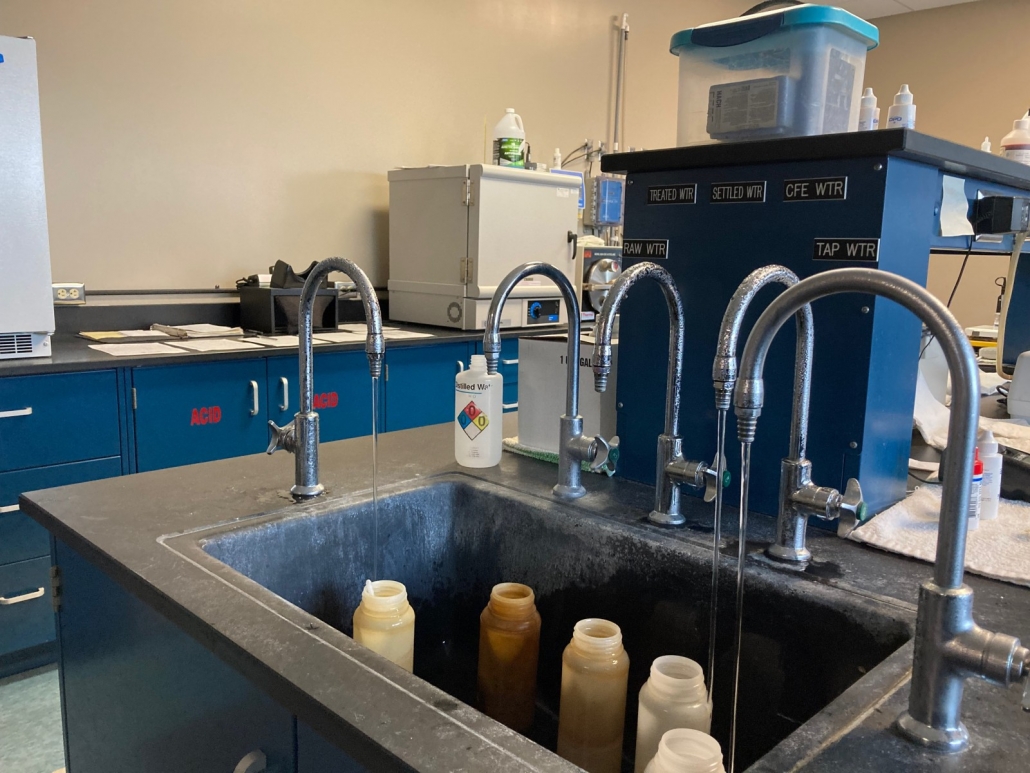
Water flows from testing taps at the South Haven water filtration plant, an 11-year-old building that is among the newer parts of the city’s water system. Photo by Kelly House / Bridge Michigan
No oversight of financial health
How did it get this bad? Experts say lack of regulation plays a role.
Michigan is one of many states that lacks meaningful oversight of drinking water systems’ finances, said Manny Teodoro, a water policy researcher and associate professor at the University of Wisconsin in Madison.
That makes drinking water different from some other utilities. For example, the Michigan Public Service Commission oversees rate-setting for investor-owned gas and electric companies, and has the power to force needed investments such as trimming trees to avoid power outages.
The state has no such authority when it comes to water. And though the American Water Works Association advises water providers to set rates based on a methodology that covers day-to-day operations and future reinvestment in the system, communities frequently ignore the guidance.
“It’s too easy for people in leadership positions to kick the can down the road,” said Bonnifer Ballard, executive director of the American Water Works Association Michigan Section. “They don’t want to be the one to raise the water rates and they’re gonna get it to the next guy.”
In the years since Flint’s crisis, state regulators at EGLE have taken steps to better track the financial health of Michigan water systems in hopes of spotting problems early. Water systems serving more than 1,000 customers must now file “asset management plans” that spell out how they’ll invest in the system over time.
But EGLE is set up to police environmental problems, not financial ones. It can express dismay over a system’s financial health, and recommend solutions, said Eric Oswald, director of EGLE’s drinking water and environmental health unit. But it lacks authority to intervene unless a system’s problems pose an imminent threat to the public.
“We’ve had systems that weren’t sure whether they were going to be able to buy (water treatment) chemicals for the next month,” Oswald said. “We don’t want to ever be in that situation.”
In 2016, in the wake of Flint, a state task force called for giving EGLE (then, the Department of Environmental Quality or DEQ) more power over water system finances. It has not happened, though EGLE officials may recommend the state be given that authority as part of a policy review aimed at preventing future crises like Benton Harbor’s.
Sen. Jon Bumstead, R-North Muskegon, who chairs the state senate subcommittee on EGLE’s budget, made no promises when asked whether Republican legislative leaders would consider such reforms.
“Understandably, trust in state agencies is lacking after the Flint and Benton Harbor water crises,” Bumstead said. “We’re proceeding cautiously on giving state government more authority, and anything we do in this regard should be bipartisan.”
Experts and activists say regulation would help, but other fixes are needed.
Leaving local ratepayers to cover the cost of water infrastructure only worsens inequality, they warn: More affluent communities will eventually raise rates to cover costs, and residents will absorb the increase. Poor communities will keep rates low and watch the water system crumble, or raise them and price residents out — a move that leaves the water system with even less revenue while depriving residents of safe and reliable drinking water.
“We need a sustainable and dedicated source of infrastructure investment dollars at the state level in Michigan,” said Cyndi Roper, a senior Michigan advocate with the Natural Resources Defense Council, a national environmental group. “We cannot rely solely on Washington and (local) ratepayers to fund these vital projects.”
Legislators have repeatedly rejected proposals that would have boosted state funding, including in the immediate aftermath of the Flint crisis.
In 2016, then-Gov. Rick Snyder proposed stocking a state fund with $165 million for water and other infrastructure. Legislators authorized just $35 million.
In 2018, then-Rep. Larry Inman, R-Traverse City, sponsored a Snyder-backed bill to funnel $110 million into water infrastructure through a fee on water utilities. It failed amid Tea Party resistance to any increase in state spending, Inman said.
“The Republican far right caucus said, ‘No, we’re not doing it,’” he said. “That’s what happened.”
More recently, Gov. Gretchen Whitmer has called on legislative leaders to work with her to create new sustained funding for water infrastructure. Bumstead, who championed the recent budget deal that funnels federal dollars to water, called ongoing negotiations over next year’s state budget “an opportunity to review whether additional investment is needed.”
A Senate budget proposal, sponsored by Bumstead, proposes cutting state appropriations to EGLE by $98.5 million, or 14 percent. Bumstead has called it a starting point for further negotiation.
For now, water managers across the state are hoping for a cut of federal COVID-19 relief dollars and infrastructure funds to drive down their maintenance backlog.
Essexville, for example, is using all of its COVID-19 relief dollars to replace lead pipes.
Once those investments are made, said Lund, the utility budget expert, “we still need to financially plan and keep the enterprise healthy.”
“If you haven’t done it in the past, you’ve got to start now.”
Read the full series
Water’s True Cost
The Great Lakes News Collaborative includes Bridge Michigan; Circle of Blue; Great Lakes Now at Detroit Public Television; and Michigan Radio, Michigan’s NPR News Leader; who work together to bring audiences news and information about the impact of climate change, pollution, and aging infrastructure on the Great Lakes and drinking water. This independent journalism is supported by the Charles Stewart Mott Foundation. Find all the work here.
Read the full series
 https://www.circleofblue.org/wp-content/uploads/2022/04/2022-04-14-Michigan-Waters-True-Cost-JGanter-1502-Edit-2500.jpg
912
1600
Brett Walton
https://www.circleofblue.org/wp-content/uploads/2018/06/Circle-of-Blue-Water-Speaks-600x139.png
Brett Walton2022-05-02 07:18:482022-12-09 10:52:35After Decades of Neglect, Bill Coming Due for Michigan’s Water Infrastructure
https://www.circleofblue.org/wp-content/uploads/2022/04/2022-04-14-Michigan-Waters-True-Cost-JGanter-1502-Edit-2500.jpg
912
1600
Brett Walton
https://www.circleofblue.org/wp-content/uploads/2018/06/Circle-of-Blue-Water-Speaks-600x139.png
Brett Walton2022-05-02 07:18:482022-12-09 10:52:35After Decades of Neglect, Bill Coming Due for Michigan’s Water Infrastructure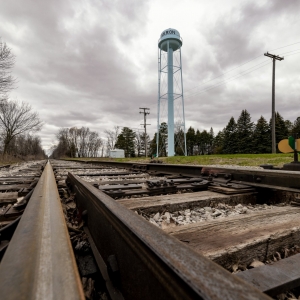
Many Rural Towns Have Neglected Drinking Water Systems for Decades
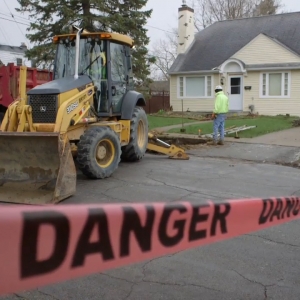
Michigan’s 20th Century Water Systems Too Big For Its Shrinking City Populations

Michigan’s Lack of Septic System Regulations is Causing Problems for Some of its Most Pristine Lakes
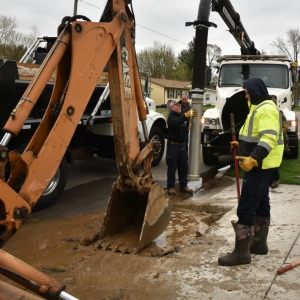
Short-Changing Michigan Local Governments Has Resulted in Deteriorating Water Systems and Other Services

High Cost of Water Hits Home
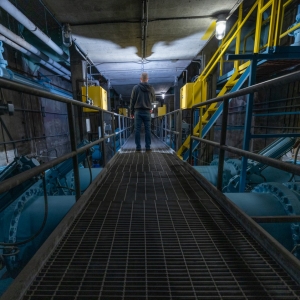
Some Michigan Water Systems Are Overbuilt, Underfunded. Are Mergers The Answer?
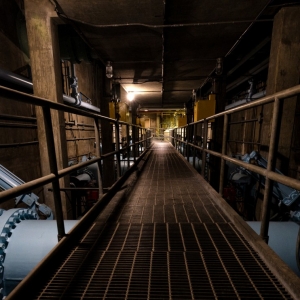
Michigan’s ‘Very Big Opportunity’ in Infrastructure Windfall
Related
© 2023 Circle of Blue – all rights reserved
Terms of Service | Privacy Policy


